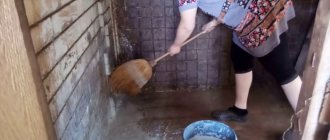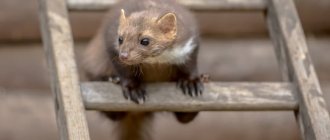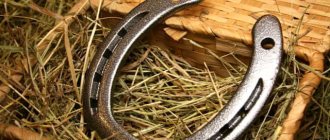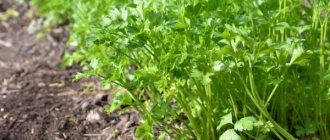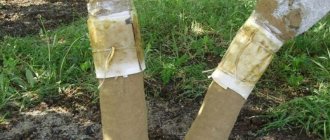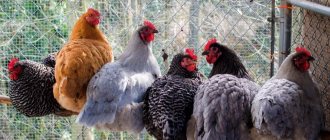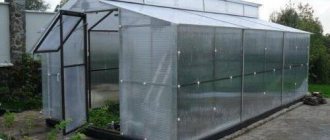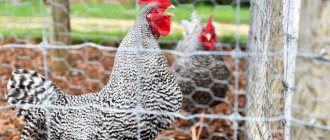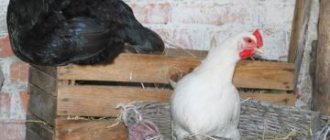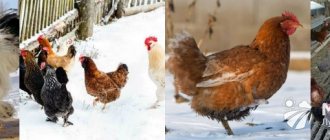Disinfection of the poultry house is included in the rules for caring for poultry. Dirt, droppings, soggy food, and shed feathers provoke the development and rapid spread of pathogens and parasites.
Pathogenic microflora causes infection of chickens and eggs. The article talks about why treatment is needed and how to disinfect a chicken coop.
Why disinfect your chicken coop?
Regular cleaning of the poultry house and care carried out fully by the owners do not guarantee ideal cleanliness in the room. This is due to the pathological processes that form when mixing dirt, feed residues and poultry waste products. Periodic cleansing does not get rid of parasites, viruses and infections. This means that the health of the chickens is in danger.
The development of pathogenic microflora is also promoted by the owners themselves, who unknowingly introduce microorganisms into the chicken coop on shoes and clothes. Therefore, one of the rules for disease prevention is the use of special clothing every time you visit the premises.
Preventive measures should be carried out every 2 months. Simply collecting garbage is not enough; parasites and bacteria take root in perches, under bedding, in hay, in nests and even in walls (especially if they are made of clay).
Reference! If it is not possible to frequently treat the poultry house, this should be done at least once every six months during the off-season (spring, autumn).
Why?
When keeping poultry, a lot of waste is generated (chicken droppings, leftover feed, feathers), which are susceptible to rotting and provide a favorable environment for the life, reproduction and nutrition of various microorganisms.
In the absence of regular cleaning, poultry becomes susceptible to diseases and epidemics, which can lead to serious damage to the household.
A sick broiler loses weight, and the meat loses its presentation and becomes unsafe for consumption. Sick laying hens lay fewer eggs and may be infected with an infection such as salmonella.
During epidemics caused by lack of disinfection, the likelihood of death increases. Poultry mortality increases significantly against the background of an increase in the number of parasites in the chicken coop: lice, lice, feather eaters, ticks, trematodes.
To combat harmful microorganisms, it is necessary to regularly disinfect the premises.
Disinfect yourself or trust the professionals?
Whether to involve professionals in the work or do the processing yourself is a matter of individual decision. Costs for funds are provided for in both cases; when calling a specialist, you need to plan additional expenses for the service.
The decision about who will carry out the disinfection is influenced by the following factors:
- the essence of the problem (in case of serious illnesses or mass infection by parasites, it is better to seek qualified help);
- the opportunity to purchase high-quality medications (in remote regional centers it is not always possible to purchase good products; it is easier to contact the sanitary service);
- independent choice of means requires careful study of the instructions, otherwise you can cause harm to both people and birds;
- the ability to pay for a call to the sanitary service every 2 months (for many this is expensive, one treatment costs 1500-2000 rubles).
After weighing all the pros and cons, the best option is selected. It’s better to combine them to avoid even greater losses in the fight against diseases and parasites.
Choosing between self-disinfection and specialized companies
Of course, each breeder chooses for himself, based on his financial condition. Calling specialists costs some money. But the best preparations for cleaning the room will be selected and you can count on high-quality work. After disinfection with the help of specialists, the chicken coop will meet sanitary and epidemiological standards.
The chicken coop after disinfection meets sanitary and epidemiological standards
The drugs that are used do not harm people, animals or birds at all (not always). Laying hens do not experience discomfort, but parasites and various infections die. Calling a team to disinfect the chicken coop means parting with at least 2,000 rubles. The amount depends on the company, the quality of the materials used and the size of the room.
It is definitely easier to carry out disinfection with the help of specialists, but calling them every 2 months is a costly procedure. Therefore, most use the services once a year or do it themselves. It is worth noting that you will still have to purchase disinfectants, even if you perform the procedure yourself, but it will cost several times less. The consumption of the drugs is small, since they are sold in the form of concentrates that are diluted in water.
You can disinfect the chicken coop yourself
It is most convenient to carry out sanitary procedures in warm weather, when you can simply release the birds into the yard. The most favorable periods for the development of ticks and bacteria are the end of spring - the beginning of summer, during which active reproduction begins. Also, the winter period is dangerous, since artificial heating is used in the room. If it is not designed correctly or there is no good exhaust, the moisture level increases, and accordingly, conditions are created for the spread of viruses. Therefore, it is better to sanitize twice a year.
Regardless of your choice, you should ensure that your coop is properly maintained between cleaning procedures. So, by adhering to simple rules, it is possible to keep birds from diseases, maintain cleanliness, this will help minimize the number of procedures for treating the poultry house.
It is important to keep the coop clean between cleanings.
- Equip the chicken coop with perches, preferably removable, to facilitate the cleaning process.
- It is necessary to install trays made of plastic or other material under the perches. This will help you remove droppings easily.
- If you bought chickens, they must first be treated, otherwise they may introduce bacteria or parasites.
- To improve the quality of the litter, you should pour a small layer of sand on top of it.
Treatment for infections
The disinfection procedure must be carried out using certain drugs. It is easier to get rid of microbial infections. There are many products on the market that can eliminate the problem in 1-3 treatments.
Things are more complicated with viruses. They do not accept even revolutionary disinfection methods well. Among the drugs that have an antiviral effect, the following stand out: Virosept, Virotsid, Bianol.
From parasites
Disinfection against parasites is carried out as a preventive measure once a year. If insects are detected, unscheduled disinfection is carried out using special preparations. They must be selected taking into account the spectrum of action. Preference is given to those agents that are active against several types of parasites.
It is impossible to remain idle when identifying insects. Meat and eggs may contain substances hazardous to humans. And birds suffer no less from harmful insects, losing productivity and activity.
Features of the disinfection procedure:
- mandatory change of litter;
- changing lime whitewash on the walls;
- parallel treatment of poultry.
Where to begin?
Before starting treatment with the drug, the room must be cleared of accumulated manure, feathers, and litter. Scrapers are used to clean nests and perches. Remove cobwebs, dust and other areas where harmful insects may be located. In most cases, such measures are sufficient to ensure the effective operation of the drug, but sometimes additional washing of surfaces may be required. It is performed using a stiff brush, paying special attention to the corners and places where the walls meet the floor and ceiling.
How to disinfect a chicken coop yourself
By following the rules for sanitizing the premises, you can cope with the disinfection of the chicken coop yourself.
Preparation
First you need to prepare everything you need to complete the job:
- clothing covering most of the skin;
- personal protective equipment (rubber gloves, respirator, goggles);
- tools and materials (sprayer, bucket, broom, shovel, plastic bags, rags, special preparations, water).
All equipment used in sanitation should be washed using detergents after finishing work. Clothes also need to be washed and rinsed several times in warm water. The respirator must be disposed of.
Preparation for disinfection
Before carrying out disinfection treatment at home, it is necessary to prepare the chicken coop. Namely:
- remove all birds from the premises;
- completely clear the floor of bedding and remaining droppings, remove uneaten food from the feeders;
- sweep and vacuum the walls, clean the ventilation holes;
- sweep the floor from any remaining debris and wash off the lime from the walls.
Before disinfection treatment at home, it is necessary to remove all equipment from the chicken coop. Perches, drinking bowls, nests and feeders are washed in a soda solution prepared at the rate of 200 g per 10 liters of water and dried in air.
Most of the products that provide high-quality disinfection of the chicken coop are toxic to humans. Therefore, before the procedure, it is necessary to wear protective clothing that covers your arms and neck, and durable shoes with thick soles.
Be sure to use rubber gloves for your hands and a face respirator, and in some cases even a gas mask.
Types of funds
The choice of disinfectants is wide, which makes it possible to choose the most suitable option. They differ not only in composition, but also in the form of release.
Aerosols
The active ingredients of aerosol preparations are often turpentine and bleach. The combination of these substances gives an exothermic reaction, manifested in the form of a cloud. A light mist disinfects indoor surfaces, penetrating into cracks and crevices. The process takes 30 minutes, after which airing takes place. For effectiveness, the procedure is repeated for 3-4 days with one treatment per day. As indicated in the instructions, the poultry may be kept in a chicken coop during processing.
Aerosol preparations also include sulfur bombs: Fas, Climate. This is already toxic smoke, so you need to use the product in empty poultry houses. After using the product, close the doors and windows tightly. Airing is carried out after disinfection for a week.
Reference! Sulfur bombs act on mold, mildew, and parasites. However, they are not effective in controlling pathogens.
Salt solutions
Products based on the sodium salt of hypochlorous acid exhibit high activity against pathogenic microorganisms. They are sprayed using spray bottles or sprayed with a regular broom.
Step by Step Actions
Pasture of chickens and skin protection
The first step in disinfecting a chicken coop yourself is to clear the room of chickens. In the warm season, they are driven out to a place for walking. In winter, they are moved to an alternative room.
Next, you should protect your skin from exposure to chemicals. A mask purchased at a specialized store is suitable for this. Long sleeves and gloves are also worn.
Basically, preparations suitable for disinfecting a chicken coop do not cause harm to health. But an allergic reaction may occur. Therefore, it is better to protect the skin.
Where to start and where to end
Standard poultry house treatment includes general and wet cleaning. Everything containing poultry waste is taken out, washed, and changed.
Products used to clean chicken coop surfaces should include only natural ingredients. This will reduce the risk of toxic fumes and, accordingly, preserve the health of the bird.
Most often, these are natural-based detergents. Or apple cider vinegar dissolved in a bucket of warm water.
Treatment of the chicken coop from parasites and pathogenic microorganisms with disinfectants begins from the ceiling. Next, the surface of the walls is processed. Then the perches, and then the floor. Drugs that are used in preventive measures are described below.
Final stages
It is recommended to wait until the disinfectant has completely dried on all surfaces to be treated. Afterwards the treatment should be carried out again.
But there are disinfectants that do not require repeated washing. Detailed information can be found in the instructions for the drug.
After repeated washing, the house is ventilated for 30-40 minutes. This is necessary in order to clean the air of the chicken coop from possible toxic fumes.
Then fresh, clean bedding is placed. Clean feeders with drinkers and other equipment are brought in. And the chickens are returned.
Review of the best disinfectants at home
Quick and effective disinfection of the poultry house is carried out using purchased products. There are a lot of them on the shelves, which sometimes makes choosing difficult. If you have no experience using antiseptics, you can use rated drugs, which the majority of users respond positively to.
Glutex
Domestic product. Purpose: treatment of poultry houses and other premises where domestic animals are kept. The disinfecting effect is provided by the following active components:
- glutaraldehyde;
- didecyldimethylammonium chloride;
- glyoxal.
The concentrated liquid has a green tint. Features of the product: neutral effect on metal and other types of materials, hypoallergenic.
The product has the following properties:
- bactericidal;
- fungicidal;
- virucidal.
Processing is carried out in the absence of birds. To destroy pathogenic microflora, dilute a 1% solution (0.5 l per 1 m2), for prevention - 0.5% (300 ml per 1 m2).
Delegol
The product is used for disinfection and prevention. The effectiveness of the drug is ensured by the following substances:
- isopropanol;
- parachloromethacresol;
- orthophenylphenol;
- lactic acid.
The bluish-tinged liquid is transparent in appearance and dissolves well in water, regardless of its temperature. The instructions describe in detail the requirements for reorganization.
Ecocide S
The product is available in powder form. Thanks to its complex action, it effectively deals with viruses, microbes and other pathogenic processes. The disinfecting effect is achieved after 1-2 treatments. The product is developed on the basis of potassium peroxomonosulfate. Also includes:
- sodium dodecylbenzene sulfonate;
- organic acids;
- inorganic salts, etc.
The powder is packaged in bags of different sizes, which allows you to choose the best option for the parameters of the chicken coop.
Virocide
Concentrated liquid product with foaming effect. Available in cans of various sizes (5, 10, 20 l). Its spectrum of action extends to bacteria, viruses, mold, fungi and algae. Features of the product:
- active substances continue to act for a week after the procedure;
- eliminates the effect of resistance in microorganisms;
- does not cause corrosive processes and oxidation when it comes into contact with different surfaces.
The effectiveness of the treatment is ensured due to the properties of the active substances used in the production of the drug:
- alkyldimethylbenzylammonium chloride;
- didecyldimethylammonium chloride;
- glutaraldehyde;
- isopropanol;
- turpentine derivative.
Disinfection on industrial poultry farms
Peculiarities
Industrial poultry breeding enterprises rarely use products that are good for small spaces. This is due to the fact that a huge factory will require a large amount of the drug.
Accordingly, such processing is financially unprofitable. In addition, disinfection at poultry farms takes place more often than once a year.
Premises on industrial farms are treated using highly toxic chemicals. They are used to ensure the destruction of pathogenic viruses and bacteria, worms and parasites. As well as toxins and poisons formed biologically.
In a poultry farm, the use of serious disinfectants will reduce the risk of epidemics that can kill the entire population.
List of drugs and methods of protection
Chemicals used to clean premises in poultry farms include:
- 3% formaldehyde;
- 2% sodium hydroxide;
- 4% Xylonaft;
- 4% Creolin.
When carrying out preventive measures using the means described above, removing chickens from the premises is a prerequisite. The person cleaning the premises must wear special clothing. It includes a suit that completely covers all parts of the body, gloves and a gas mask.
Dear fellow poultry keepers and readers of our website, what do you know about disinfecting chicken coops? Please tell us in the comments if you have had to treat chicken premises and with what means.
Reposting will help invite friends to discuss the topic and disseminate useful information among new bird breeders. Special thanks for the 5 stars.
Folk remedies
The fight against parasites and diseases has been carried out at all times. When there were no special drugs, people coped with improvised means. A time-tested antiseptic is iodine. To disinfect 20 m2 of space you will need only 10 grams. The procedure takes place without the presence of a bird. After the sanitization is completed, the poultry house is ventilated and the livestock are returned to their original place.
Another affordable and effective remedy is a solution of hydrochloric acid and potassium permanganate (proportions 5:1). The prepared mixture is left in the room for at least half an hour. The bird is first removed from the chicken coop. While disinfection is in progress, removable equipment must be washed with water and vinegar. Before releasing the birds, the container with the working solution is removed.
A mixture of vinegar and kerosene is more aggressive. The components are taken in equal proportions. The solution is sprayed on the surface of the poultry house, after which the room is left closed for 3-4 hours. However, there should be no birds in it. The procedure is completed with prolonged ventilation and washing the chicken coop with water and vinegar (200 ml of vinegar per bucket of water).
Reasons for holding
Chickens, like other living organisms, are susceptible to many diseases. Any pathology can destroy the entire livestock completely. But to prevent this from happening, the farmer must carry out routine disinfection of the poultry house.
The chicken coop needs urgent treatment when the standards for contamination with feces, spoiled food, and rotten water are exceeded. Pathogenic microbes and bacteria are formed in the waste of birds subject to rotting. They cause diseases in chickens.
A common reason for sanitary and hygiene measures is a poorly designed ventilation system in the room. This also creates an ideal environment for the development of infections.
Disinfecting the chicken coop with the chickens
If treatment in the poultry house is carried out together with the chickens, then the measures are more correctly called sanitation. The purpose of the procedure: to significantly reduce the concentration of pathogenic microorganisms. It is not possible to completely destroy bacteria and viruses in this way.
When performing disinfection, you must strictly follow the instructions so as not to harm the birds. This is especially true for laying hens. Despite the low concentration of the active components of the drug, they can cause irritation of the mucous membrane and even a mild form of poisoning.
Reference! Sanitation is performed no more than once a month. All walls in the chicken coop and equipment are treated outside the premises with special means.
During and after disinfection procedures, you need to keep doors and windows open, or turn on forced ventilation to ensure a flow of clean air.
For sanitation, smoke bombs and special solutions are used that are effective against fungi and pathogens of pulmonary diseases. The smoke screen formed after igniting the bomb kills pathogenic bacteria, thereby cleaning the surfaces of the poultry house and the air. The duration of the procedure is 30 minutes. Upon completion, long-term ventilation is carried out.
In addition to checkers, Ecocide is used for sanitation. The drug can be used indoors with chickens. When determining a single dose, the parameters of the chicken coop and the size of the flock are taken into account. Spraying is carried out with a 0.5% solution or cold fog at the rate of 30 ml per 1 m3.
Smoke bombs
Sulfur checkers
Climate and Fas checkers are popular and easily available for purchase. Use according to the attached instructions.
Iodine monochloride
To treat a chicken coop with iodine monochloride, you need to make a solution. To prepare it you will need: crushed aluminum and iodine monochloride at the rate of 5 grams per 100 milliliters.
When these components are mixed, smoke is formed that destroys bacteria, viruses, and infections.
Iodine checker
Iodine bombs for disinfecting a chicken coop can be purchased in specialized stores.
Dixam is considered a popular iodine bomb. It contains iodine, potassium and copper.
How to clean a room using such means is described in the article: “Using iodinol for laying hens.”
Features of treatment after chicken illness
Disinfection is carried out taking into account the problem that has arisen. If the infection was caused by parasites, you need to purchase a drug of appropriate action to disinfect the premises.
Treatment and disinfection of the chicken coop are carried out in parallel. Experienced poultry farmers recommend first treating the entire flock. After this, the birds are kept in a pen outside or in another room. In the meantime, the chicken coop is thoroughly cleaned. The litter is disposed of, feeders and other removable containers are washed and treated with special preparations.
In the poultry house, you need to scrape off the top layer from the walls and floor. It is also better to wash off the lime so that pathogens or eggs do not remain under it.
Reference! When purchasing a drug, you need to clarify what types of parasites it acts on, whether the effect applies to larvae and eggs, pathogens of fungal diseases.
Disinfection after chicken illness should be carried out repeatedly. Sometimes 3-4 multiple procedures are required. After a long period of ventilation, the birds are returned to their original place. But before that, they need to be examined to avoid re-infection.
Simultaneous processing of premises and birds
At large poultry farms, a certain period of time is maintained between the slaughter of old chickens and the introduction of young animals. This pause is used to disinfect the room. In homestead and country farms, the chicken coop is always busy, so it often has to be handled together with the birds inside. For this purpose, non-toxic and bird-safe compositions are used:
- Vercon and Monclavid;
- Ecocide S and Virocide;
- other.
In addition to industrial products, you can use a method using iodine monochloride, as well as aluminum.
Prevention
It is possible to deal with parasites and pathogenic microflora, but it is easier to carry out preventive measures in a timely manner to protect birds from serious diseases. Events are held in compliance with the following rules.
- Treatment of the premises must be regular (at least once every 6 months or at least a year). The poultry house is disinfected regardless of whether there are problems with parasites/diseases or not. Experienced poultry farmers recommend the frequency of disinfecting the chicken coop once every 2 months.
- To prevent the development of microorganisms, it is necessary to install a ventilation system in the poultry house. Even a primitive design will provide air flow. In a ventilated room, the growth of bacteria and viruses is greatly reduced.
- You should clean the chicken coop 1-2 times throughout the week. The litter is thoroughly shaken out outside. Bird nests and perches are also cleaned (it is better if they are removable).
- It is recommended to sprinkle the swept floor with a fresh portion of sand. Birds are more comfortable with it than with straw or pine shavings.
- During cleaning, a passage is made over all surfaces, including walls.
- As a preventive measure, the walls are whitewashed with lime.
Do not despair when identifying alarming symptoms in birds. Timely treatments and regular preventive measures will help get rid of the problem and subsequently maintain the poultry house in acceptable sanitary conditions.
Watch a video about an ancient method of disinfecting chicken coops and other utility rooms:
Tips for maintaining cleanliness after disinfection
After treating the chicken coop with lime, it is necessary to clean the floor and perches from its excess. Birds are released into the room after the walls are completely dry and ventilated. Additionally, it is recommended to thoroughly clean the adjacent exercise yard.
In order to keep the chicken coop clean longer after disinfection, it is recommended;
- use removable perches, as they are easier to care for;
- under the perches where the birds sit, place plastic containers-pallets for collecting excrement;
- purchased chickens, before being released into the herd, must be kept in quarantine in a separate room, and also treated for parasites;
For hygienic purposes, the straw bedding is sprinkled with a small amount of clean sand.
Work order
In addition to choosing the most effective and safe means, you should carefully consider the question of the disinfection algorithm. The more thoroughly the preparation is done at each stage, the cleaner the chicken coop will become after sanitation.
Preparation rules
The chicken coop should be washed thoroughly before treatment.
Before irrigating surfaces and walls, it is worth completing a number of preparatory steps:
- Carrying out dry cleaning: remove cobwebs, dust and dirt from the ceiling, walls, perches. Then clean out all the droppings and shake them out or remove the litter completely.
- All metal products are disinfected by fire. This is often done with a blowtorch, covering all iron elements.
- Stone and concrete, in addition to dry covering, are painted with freshly slaked lime with the addition of copper sulfate.
This is done to prevent further development of fungal yeast.
After the basic preparation, they begin direct processing, moving the device from top to bottom. After aging, the chicken coop must be ventilated, drinkers and feeders are washed. And only after final drying are the laying hens released.
Choice of product
It is impossible to say for sure which remedy is the safest and most perfect. Each farmer, based on personal experience and observations, chooses the most suitable product. For example, in the warm summer period, barns are sprayed with insecticides to get rid of parasitic insects. Wet places are additionally covered with lime. A cold fog generator is an expensive installation. Its purchase is justified only if there is a need to also process greenhouses with vegetables.
Iodine monochloride has a persistent corrosive effect, so it is better not to use this substance in a room with a large number of metal structures.
conclusions
- Disinfection of a chicken coop (disinfect/disinfect) is a matter that requires regularity and careful preparation of keeping chickens, otherwise its absence can lead to illness.
- Before starting to irrigate the barn using bactericidal substances, the room is subjected to thorough mechanical cleaning.
- The method in which the chickens remain is not very effective and can serve as an intermediate, supporting stage rather than as the main method of disinfection.
- Of the industrial preparations, the most in demand are: Glutex, Monclavit, Delegol, Ecocide S, manganese.
- Sulfur bombs, slaked lime and purification by fire are also used as auxiliary aids.
- Farmers use 2 main options: wet cleaning and aerosol. The latter, creating a veil of cold fog, settles more slowly, disinfecting the air, and is considered the most effective.
You can read about the proper keeping of chickens at this link.
Rules for using lime for processing
Among household products, the most popular method of treatment is bleach. Having a low degree of harmfulness, it can relieve chicken coops from many problems. Like any chemically derived substance, it has its positive and negative sides. In addition to destroying existing bacteria, it maintains a barrier layer against new ones for a long time. The procedure is simple and transparent. To use lime treatment successfully, do the following:
- First, clean the area from dirt and droppings.
- Slaked lime is scattered under the flooring, on the floor.
- Concrete and stone parts are painted with this material.
- Regularity: at least 1-2 times a month.
The product is used as an auxiliary disinfection to the main substance, since it is not capable of combating yeast fungi.
Bleach has a strong, specific odor, so this method should not be used often. Some laying hens may exhibit lethargy, decreased appetite and egg production, and may cause allergic reactions in humans.
